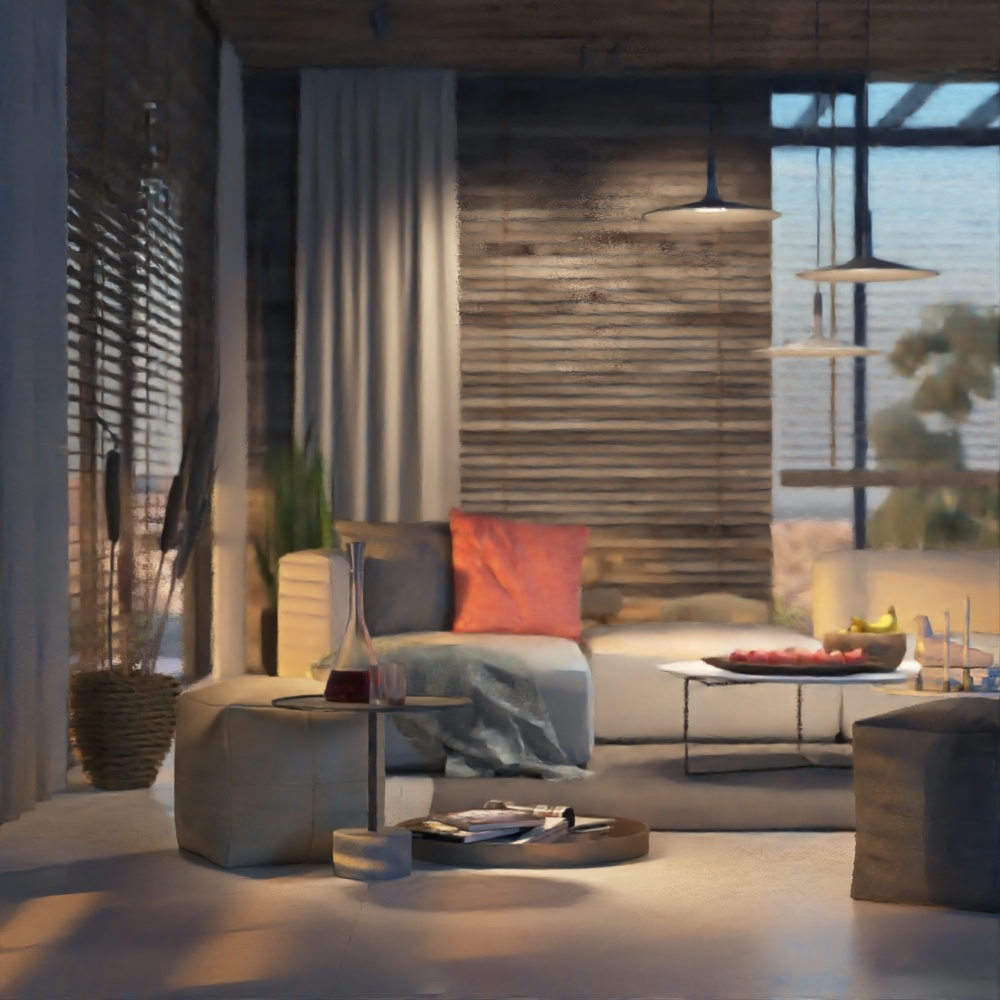Page History
...
Overview
...
| Section | ||||||||||||||||||||||||||||||||||||||||||||||
|---|---|---|---|---|---|---|---|---|---|---|---|---|---|---|---|---|---|---|---|---|---|---|---|---|---|---|---|---|---|---|---|---|---|---|---|---|---|---|---|---|---|---|---|---|---|---|
|
Denoising Engines
...
VRayDenoiser offers a choice between the Default V-Ray denoiser, the NVIDIA AI denoiser, and the Intel Open Image Denoise. Each offers a different denoising algorithm that comes with different benefits. Each offers a different denoising algorithm that comes with different benefits. See the denoising engine examples below.
Default V-Ray Denoiser - V-Ray's denoising algorithm. It can utilize the CPU or the GPU (AMD or NVIDIA GPUs) to perform the denoising. It is consistent when denoising render elements, as it applies the same denoising operator to all render channels, which means that it is recommended for denoising the render elements to be used for compositing back the beauty image. In addition, it comes with a standalone version, which is recommended for denoising animation by using frame blending.
NVIDIA AI Denoiser - V V-Ray's integration of NVIDIA's AIs AI-based denoising algorithm. The The NVIDIA AI Denoiser requires an NVIDIA GPU to work, regardless of whether the actual rendering was performed on the CPU or GPU. This means that rendering on the CPU will still require requires an NVIDIA GPU for denoising with the NVIDIA AI Denoiser and has some advantages and drawbacks compared to the Default V-Ray Denoiser. For example, the NVIDIA AI the NVIDIA AI Denoiser performs the denoising faster, but is not consistent when denoising render elements. This means that there will be differences between the original RGB image and the one reconstructed from render elements that are denoised with the NVIDIA AI the NVIDIA AI Denoiser. It also doesn't support cross-frame denoising and will likely produce flickering when used in animation.
| UI Text Box | ||
|---|---|---|
| ||
The Nvidia AI Denoiser only works on Nvidia Maxwell and newer GPU architectures. |
...
Parameters
...
| Section | |||||||||||||||||||||||||
|---|---|---|---|---|---|---|---|---|---|---|---|---|---|---|---|---|---|---|---|---|---|---|---|---|---|
|
Suggested Render Settings
...
Example: Default V-Ray Denoiser
The example below illustrates how the Default V-Ray Denoiser works after more samples are made with the Progressive image sampler. When the samples are too few, there is not enough information for the denoising to produce a smooth result. You can compare the results between an image with applied denoising and without.
| Section | ||||||||||||||||||||||||||||||||||||||||||||||||||||||||||
|---|---|---|---|---|---|---|---|---|---|---|---|---|---|---|---|---|---|---|---|---|---|---|---|---|---|---|---|---|---|---|---|---|---|---|---|---|---|---|---|---|---|---|---|---|---|---|---|---|---|---|---|---|---|---|---|---|---|---|
| ||||||||||||||||||||||||||||||||||||||||||||||||||||||||||
| Section | ||||||||||||||||||||||||||||||||||||||||||||||||||||||||||
| Column | ||||||||||||||||||||||||||||||||||||||||||||||||||||||||||
|
| Column | |||||||||||
|---|---|---|---|---|---|---|---|---|---|---|---|
| |||||||||||
The original vs. the denoised image after 64 passes. |
| Column | ||
|---|---|---|
| ||
|
...
Example: NVIDIA AI Denoiser
The example below illustrates how the NVIDIA AI Denoiser works after more samples are made with the Progressive image sampler. When the samples are too few, there
...
's not enough information for the denoising to produce a smooth result. You can compare the results between a render with applied denoising and without.
| Section | |||||||||||||||||||||||||||||||||||||||||||||||||||||||||||||||||||||||||
|---|---|---|---|---|---|---|---|---|---|---|---|---|---|---|---|---|---|---|---|---|---|---|---|---|---|---|---|---|---|---|---|---|---|---|---|---|---|---|---|---|---|---|---|---|---|---|---|---|---|---|---|---|---|---|---|---|---|---|---|---|---|---|---|---|---|---|---|---|---|---|---|---|---|
| |||||||||||||||||||||||||||||||||||||||||||||||||||||||||||||||||||||||||
| Section | |||||||||||||||||||||||||||||||||||||||||||||||||||||||||||||||||||||||||
|
...
Example: Intel Open Image Denoise
The example below illustrates how the Intel Open Image Denoise works after more samples are made with the Progressive image sampler. When the samples are too few, there's not enough information for the denoising to produce a smooth result
...
. You can compare the results between a render with applied denoising and without.
| Section | |||||||||||||||||||||||||||||||||||||||||||||||||||||||||
|---|---|---|---|---|---|---|---|---|---|---|---|---|---|---|---|---|---|---|---|---|---|---|---|---|---|---|---|---|---|---|---|---|---|---|---|---|---|---|---|---|---|---|---|---|---|---|---|---|---|---|---|---|---|---|---|---|---|
| |||||||||||||||||||||||||||||||||||||||||||||||||||||||||
| Section | |||||||||||||||||||||||||||||||||||||||||||||||||||||||||
|
Denoising Animations
...
When denoising animations, it is recommended to use the Standalone Denoiser Tool. Unlike the denoiser integrated in the UI, the standalone tool can do frame blending for animations, which reduces flickering. The integrated denoiser only works on the rendered frame and does not take the next and previous frame(s) into account, like the standalone tool does.
...










